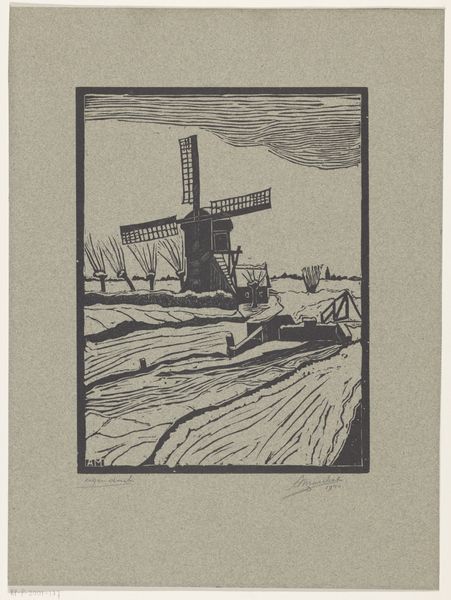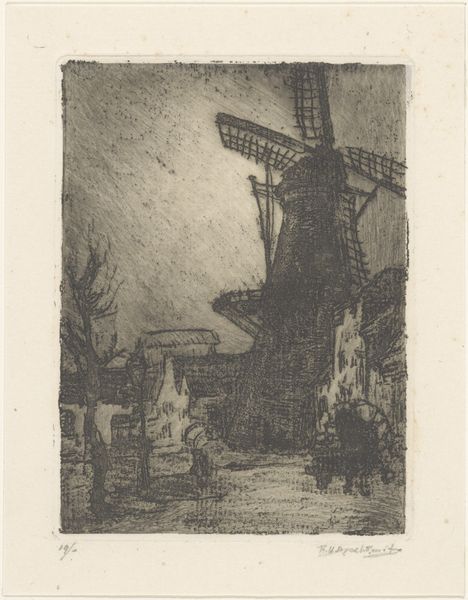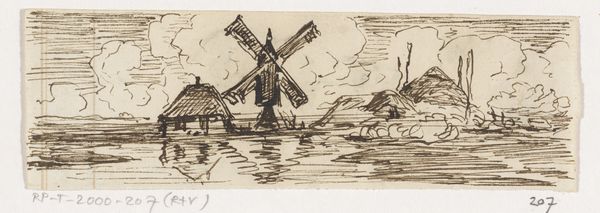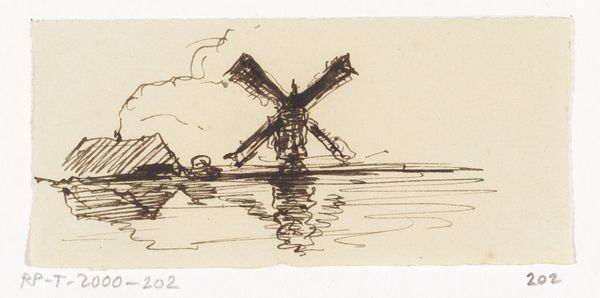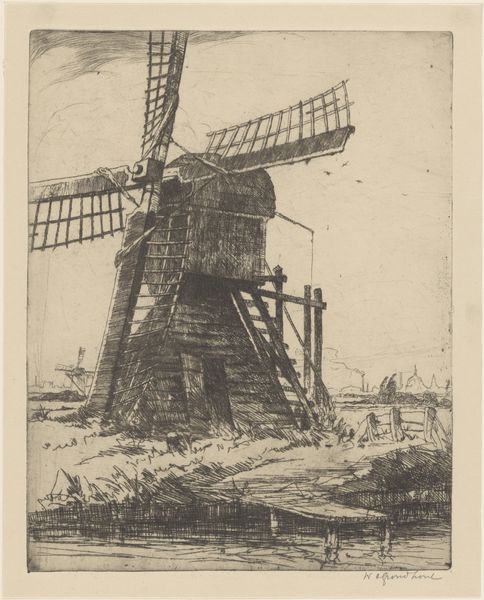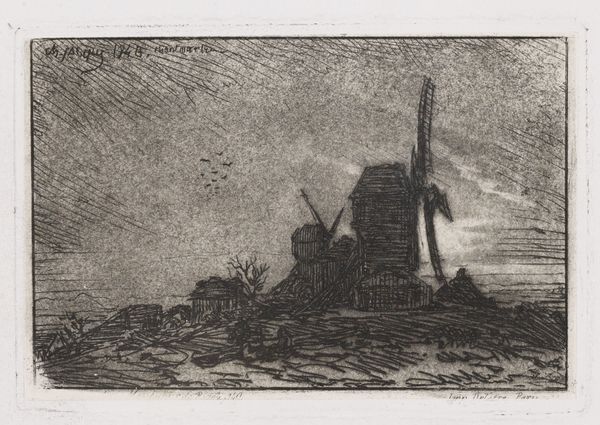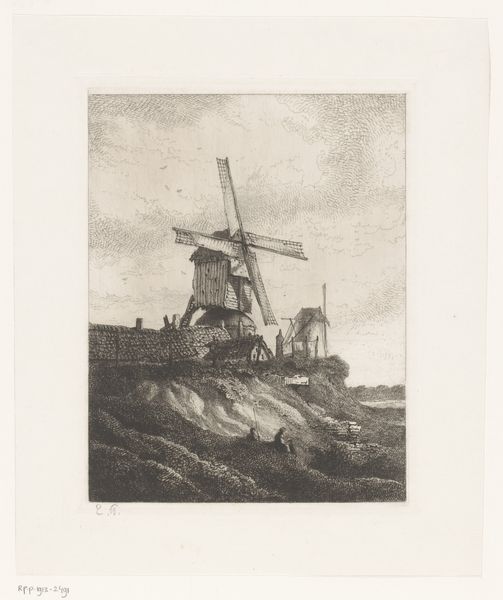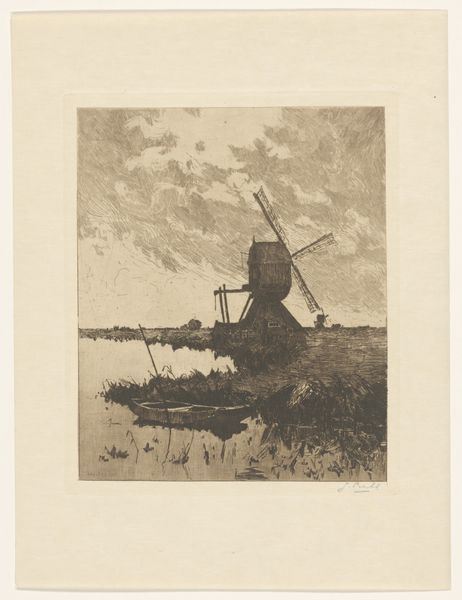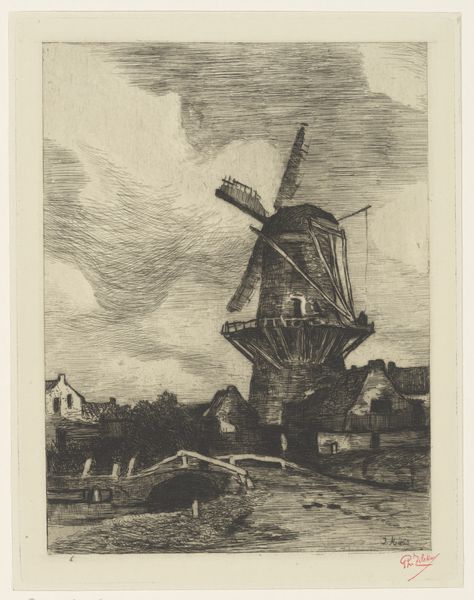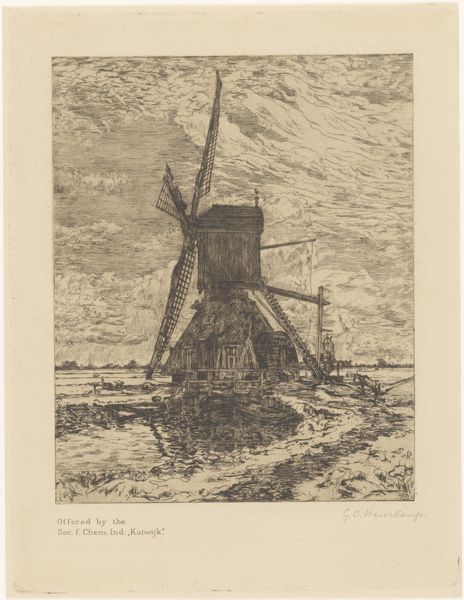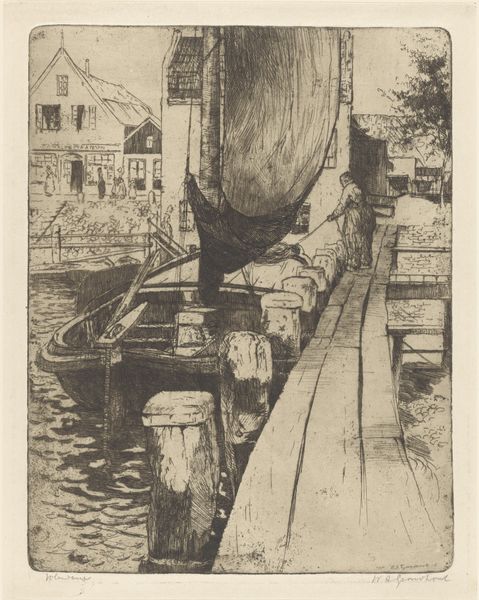
print, woodcut
#
dutch-golden-age
# print
#
landscape
#
woodcut
Dimensions: height 327 mm, width 228 mm
Copyright: Rijks Museum: Open Domain
Curator: Today, we are looking at a piece called "Molen" created in 1930 by Louis Cardinaals. It's a woodcut print currently housed here at the Rijksmuseum. Editor: Immediately, I am struck by the contrast. It's almost entirely black and white, creating a starkness that really emphasizes the texture of the wood grain. There's something both imposing and intimate about it. Curator: That contrast is quite deliberate, characteristic of the Dutch Golden Age revival this work alludes to. The public role of the Dutch windmill in Cardinaals’ era speaks volumes about the relationship between the Dutch identity, land control, and technological progress of the time. Editor: Absolutely. You can’t ignore the political dimension here. Historically, windmills were vital pieces of infrastructure; it becomes symbolic of both the power to shape nature, and the working-class labor that goes into harnessing that power. Curator: I would like to add that printmaking has a very strong connection to political discourse; and indeed to revolution. This artwork is not overtly protesting, but Cardinaals is situating this landscape tradition within the radical technology of reproduction that prints facilitated. Editor: Do you think there's any connection to the historical representation of women working with the windmill as sort of almost allegorical for motherhood in particular? Does it appear in this depiction? Curator: Well, it's subtle here. The composition focuses predominantly on structure and mechanical labor, not denying female labor or even representation, but rather drawing a clearer link to tangible actions rather than strictly a gendered sphere. It might be reaching to extract that representation here. Editor: Maybe. But consider the scale. Though small, "Molen" evokes so much emotion through that simplicity. It’s quiet but resolute. And the way it reduces everything to pure form emphasizes our own active looking process: it calls attention to the political nature of observing landscapes itself. Curator: Exactly! Art shapes not only perceptions of landscapes, but public attitudes toward their preservation and conservation; and Cardinaals definitely touches on that very long history. Editor: Yes. It really brings to light the connection between technology, labor, and also our responsibility to both heritage and sustainable futures. Curator: I appreciate how you’ve linked so many narratives present within the work! It has been delightful to have another lens with which to look at this work. Editor: Thank you for sharing the work with me, I now see more meaning than I would on my own, and this conversation opens so many opportunities for how it impacts a modern sensibility, thank you.
Comments
No comments
Be the first to comment and join the conversation on the ultimate creative platform.
